6 April, 2002
Weather: Mostly Sunny
High 29
Low -7
The Science Behind Conductive Heat Flux (Heat Flow), continued
Conductive Heat Flux is the transfer of energy from warmer to colder
temperatures. Heat is less dense than cooler temperatures and will
flow towards the atmosphere.
Heat flow depends on three variables: surface temperatures, snow
depth, and snow density. Below are 6 diagrams illustrating changes
from these three variables using temperature gradient within the snow
cover. A steep temperature gradient indicates high conductive heat
flux whereas a slight slope represents mild heat flow. We only
calculate heat flux between the snow cover as a proxy of the entire
"picture."
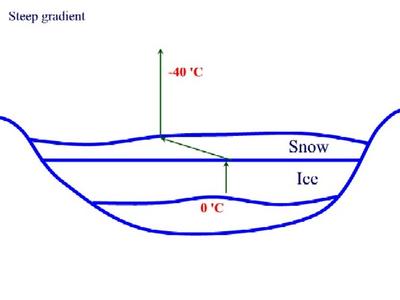
2. Surface temperature: Steep gradient due to larger temperature difference.
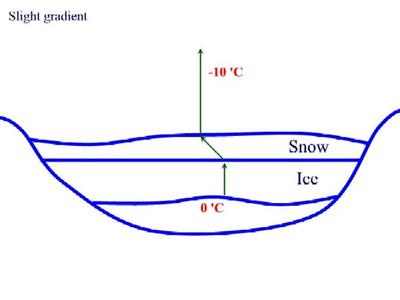
1. Surface temperature: Notice the slight gradient between 0 to -10 C. Heat will not flow as much due to smaller temperature differences.
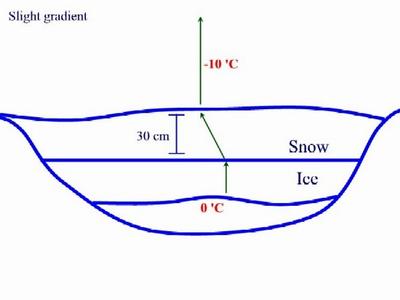
3. Snow depth: Thick snow cover, containing large amounts of air molecules providing good insulation, trap heat flow from the bottom of the ice. Heat flow will be slow.
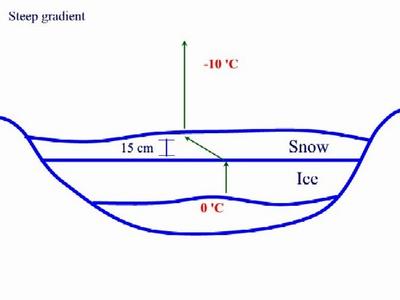
4. Snow depth: Loss of heat due to lack of insulation from snow.
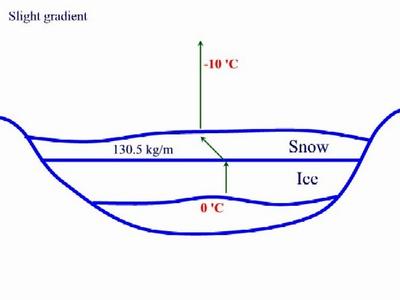
5. Snow density: Loose snow also contains a large amount of air molecules and heat flow will decrease.
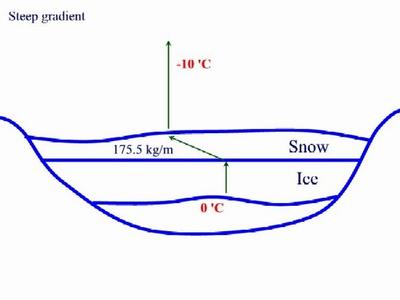
6. Snow density: Dense snow provides little insulation, increasing heat flow.
Contact the TEA in the field at
.
If you cannot connect through your browser, copy the
TEA's e-mail address in the "To:" line of
your favorite e-mail package.
|
